Above the fireplace in Sir John Soane’s basement kitchen there hangs a dead dog. A mummified whippet, to be precise, with an unfortunate pedigree: probably a former racing dog, it might have been deliberately starved to death once it ceased to be a contender. The artists Langlands & Bell purchased this desiccated carcass at a Brick Lane market stall for £3. It overlooks a glass-topped table containing a faintly macabre collection of similar found objects from the East End: a rat in a loaf of bread, a dead bird, a brick, a conjoined lump of toothbrushes.
There are probably some health and safety rules about keeping dead dogs in kitchens, regardless of how mummified they are, but the basement certainly seems the appropriate place for it. This unsettling assemblage sits at odds with the rest of work of Nikki Bell and Ben Langlands, who have been collaborating as Langlands & Bell for four decades. Their characteristic work is icy, distanced, architectural – but it rests on this bed of grotty archaeological truth. They make crisp, clear, diagrams, but they show where the bodies are buried.
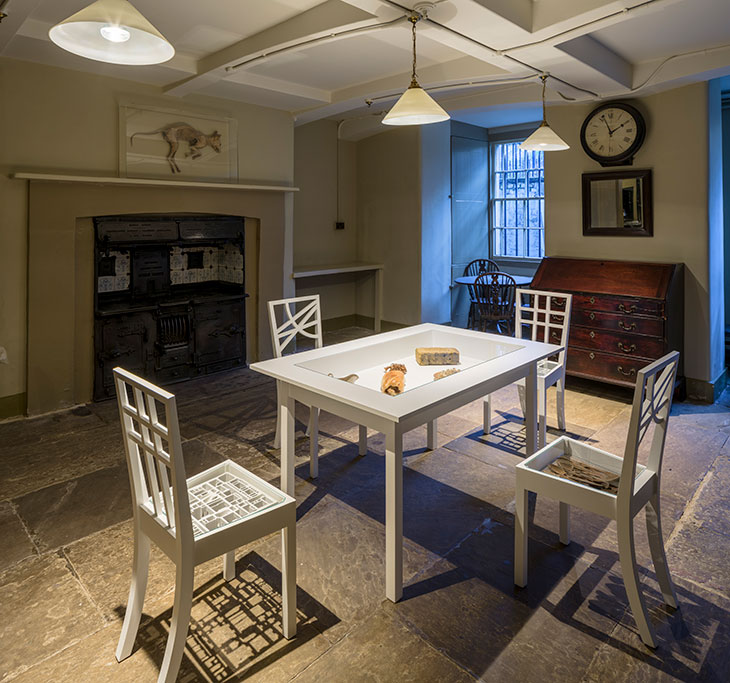
Installation view of ‘Langlands & Bell: Degrees of Truth’ in the Kitchens of Sir John Soane’s Museum, London, 2020. Photo: Gareth Gardner
The Soane Museum makes an excellent setting for Langlands & Bell, and excellence of their exhibition reveals itself in stages. In the ground-floor library, the first room the visitor sees and one of the grandest in the house, stands a new work, specially made for the show, which helpfully shows what a solid pairing of artist and setting this is. Grand Tour (2020) is a series of seven architectural models displayed in vitrines set in the seats of seven chairs, which replace the 18th-century Cantonese chairs that usually line the library wall. Some of these buildings, such as the Temple of Vesta at Tivoli, would have been familiar to Soane; others are much more recent, such as David Chipperfield’s extension to the Kunsthaus Zurich in 2018. As bleached, cutaway layouts in a neat rank of chairs, the intricacy and delicious detail of these models pulls the viewer while also homogenising the buildings they depict. Past and present are unified – but it gestures at the uniform tastes of a jet-setting European architectural elite.
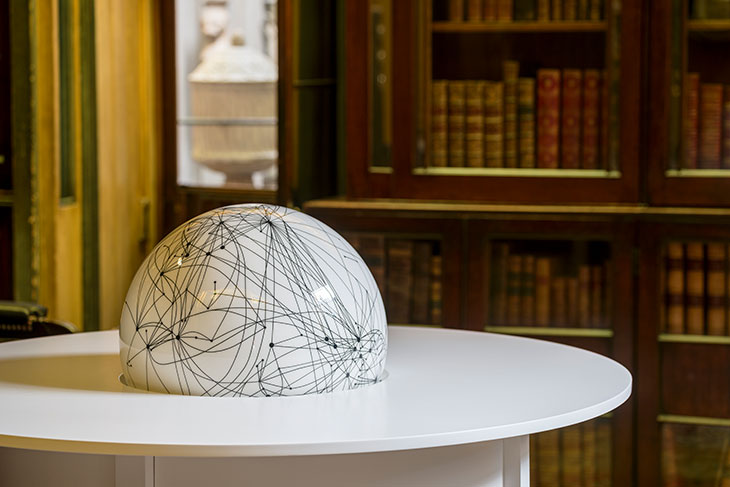
Globe Table (detail; 2020), Langlands & Bell. Installation view in the No. 13 Breakfast Room at Sir John Soane’s Museum, London, 2020. Photo: Gareth Gardner
This cool stare at globalism is repeated in Globe Table (2020), another specially made work, in the adjoining breakfast room. This lacquered globe, set in a tabletop, depicts the constellation of global air routes as a skein of points and lines. Stripped of geographical information, rendered in monochrome, and polished to a high shine, the pure data represented is both enticing and distinctly chilly. A further, unintended twist is provided by the coronavirus pandemic: with travel curtailed, we know that we are seeing a fiction, and while the work was designed to be rotated by the viewer, for now we must keep our hands off.
Globe Table is paired with an earlier Langlands & Bell piece, Virtual World (2009), a pair of medals with concentric rings representing air travel hubs, aid NGOs, intelligence agencies and banned organisations: borderless entities locked in orbit, a troubling ecosystem of the networked world. www. (2000) is another global air map, etched into a block of glass – part ethereal and beautiful bubble, part gaudy corporate trophy of the kind one might get for being sales manager of the year.

www. (2000), Langlands & Bell. Installation view at Sir John Soane’s Museum, London, 2020. Photo: Gareth Gardner
The spectre of terror that haunts the rational architecture of Langlands & Bell is most obviously displayed by The House of Osama bin Laden (2003), the piece that put the duo on the Turner Prize shortlist: a computer-game-like walkthrough of the al-Qaeda founder’s abandoned house in Afghanistan, visited after his eviction by the US military. Alas this is no longer interactive, per the pandemic, and in any case was not working on the day I visited. Another of Bin Laden’s former residences, his final bolthole in Pakistan, can be found in Infinite Loop (2014). A model of the compound in Abbottabad, viewed at an isometric angle, is the centre panel in a triptych, sandwiched between models of the GCHQ building in Cheltenham and Norman Foster’s new Apple headquarters in California. The latter structures are both rings, and seem to have caught the untidy geometry of the Bin Laden pad in a vice, or perhaps a pair of headphones, referring to the electronic surveillance used to hunt down the terrorist leader. Behind this is another radial structure, a 1994 model of the layout of the Millbank Penitentiary, which opened in 1816. This prison adopted some principles from Jeremy Bentham’s panopticon, in which discipline would be enforced through sight-lines and the constant possibility of surveillance. This rational plan, again seductive in its delicacy and detail, suggestive of fine lace, is only prevented from being beautiful through the knowledge of the misery it represented to so many souls.
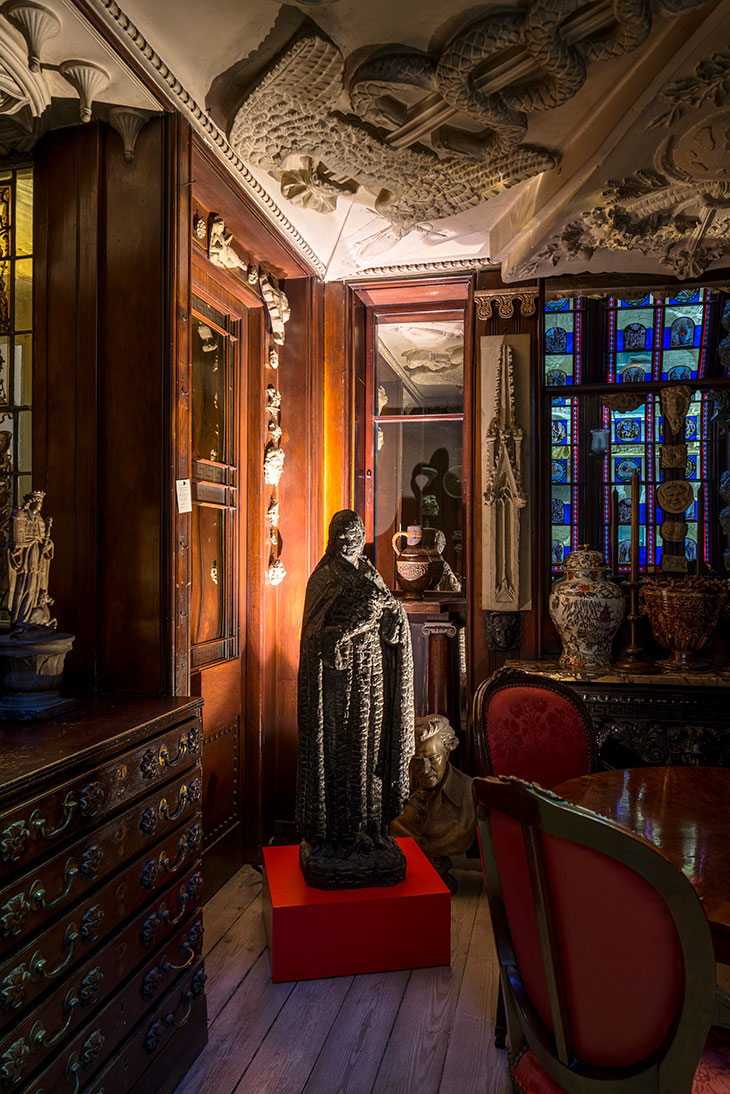
Burnt Madonna (1985), Langlands & Bell. Installation view in the Monk’s Parlour at Sir John Soane’s Museum, London, 2020. Photo: Gareth Gardner
The galleries upstairs collect a catalogue of Langlands & Bell themes: modernist architecture, European institutions, air travel, the buildings of the tech giants. Psychoanalysis is a dubious pursuit when applied to art, but it’s a confident, rational, geometric superego. But some of the most satisfactory thrills are provided by basement id. Besides poor old wind-dried Fido, and the remade Traces of Living collection, in the sculpture court is Burnt Madonna (1985): a statue of St Theresa that has been deeply scorched, its cracked and sparkling surface left resembling quilted velvet. As a made object, it would be remarkable; but it is a disturbing found object, salvaged from a Catholic church that had been attacked by an arsonist on Christmas Day 1985. It is a superb addition to the cluttered gothic atmosphere of the crypt. Beside it is Burnt Interlocking Chairs (1997) – more paradoxical furniture of the kind that is found in every part of the show, unsettling in its thwarted utility, mediating the scale between the architectural and the personal.
The exhibition was originally meant to end on 31 May, but the coronavirus intervened. The museum reopened at the beginning of October; between Apollo’s visit and the submission of this review, the second lockdown was announced, the author aged about 30 years and the museum closed again on 5 November. Who knows if the proposed 3 January closing date will stick, but I hope that it will be extended again, so that more people have an opportunity to enjoy this unique and deeply satisfying show.
Museums and galleries in the UK are closed from 5 November owing to Covid-19. For more information about ‘Langlands & Bell: Degrees of Truth’ (scheduled to run until 3 January 2021), visit the Sir John Soane’s Museum website.
Unlimited access from just $16 every 3 months
Subscribe to get unlimited and exclusive access to the top art stories, interviews and exhibition reviews.

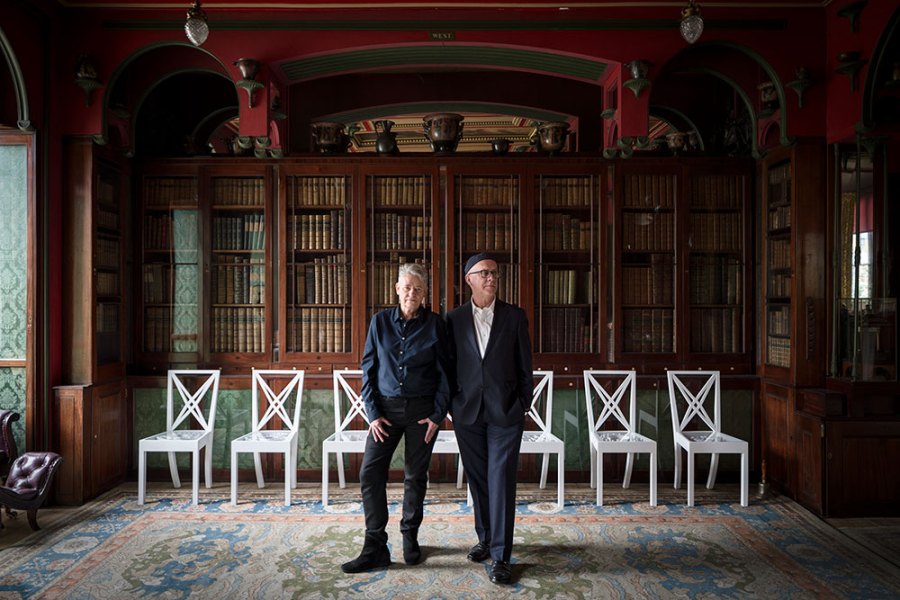
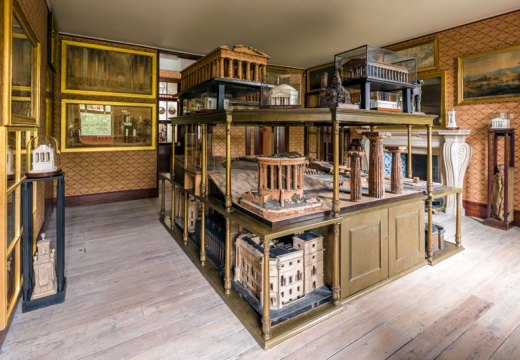
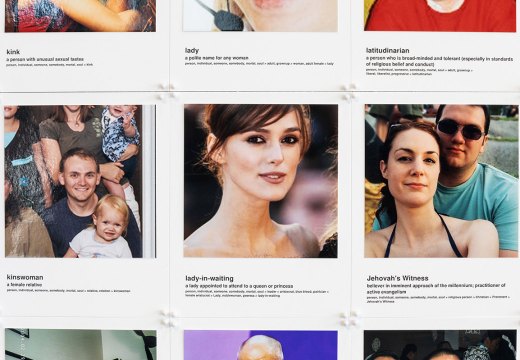
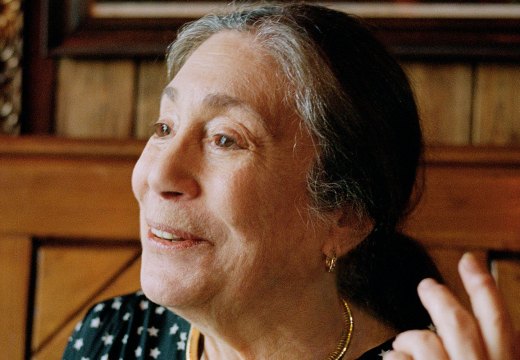









![Masterpiece [Re]discovery 2022. Photo: Ben Fisher Photography, courtesy of Masterpiece London](http://www.apollo-magazine.com/wp-content/uploads/2022/07/MPL2022_4263.jpg)
It’s time for the government of London to return to its rightful home